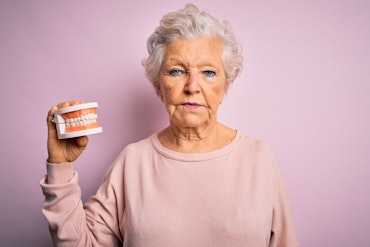How medications impact women differently than men — the new model for meds
Have you had a different reaction from your partner to the same medication? This could be why.
![<p>There has been a longstanding male bias in the clinical testing of drugs and a disproportionate number of liver-related adverse events in response to pharmaceutical goods. [Source: Shutterstock]</p>](https://agedcareguide-assets.imgix.net/news/articles/wp/womenmedsmen__0310.jpg?fm=pjpg&format=auto&w=550&q=65)
There has been a longstanding male bias in the clinical testing of drugs and a disproportionate number of liver-related adverse events in response to pharmaceutical goods. [Source: Shutterstock]
Key points:
- A novel solution has been created by researchers to ward off the negative consequences of medication
- University of Virginia Health System scientists worked on a new model for medication that would address the male-centric bias in clinical testing
- The recently developed tool is thought to pave the way for safer meds and address liver-related adverse events in women which were overlooked during clinical trials
University of Virginia Health System researchers set out to address a persistent problem in the field of drug testing — the male bias.
Although women have been historically underrepresented in drug testing, in contrast to their male counterparts, they have also been disproportionately more likely to experience problems from their medication use.
UVA scientists created sophisticated computer simulations of male and female livers to uncover sex-specific differences in how liver tissue is affected by drugs. The simulations also represent a powerful new tool for drug development, helping ensure that new medications will not cause harmful side effects.
One of the model’s creators, UVA researcher Jason Papin, PhD, said there are complex networks of genes and proteins that control how cells respond to drugs.
At least 77 drug-metabolising or transporter genes have been identified that demonstrate differential expression based on sex.
“We knew that a computer model would be required to try to answer these important clinical questions and we’re hopeful these models will continue to provide insights that can improve healthcare,” Jason said.
Papin, of UVA’s Department of Biomedical Engineering, developed the model in collaboration with Connor Moore, a PhD student and Christopher Holstege, MD, a UVA emergency medicine physician and director of UVA Health’s Blue Ridge Poison Centre.
“It is exceedingly important that both men and women receive the appropriate dose of recommended medications,” Holstege said.
“Drug therapy is complex and toxicity can occur with subtle changes in dose for specific individuals.”
A study from 2014 was conducted to determine the sex-specific outcomes of drug administration and liver injury, which found:
Mechanisms that may explain gender-related differences in the [pharmacokinetics] of many drugs can include hormonal status, body weight, body composition, cardiac output, coadministered drugs and gender-specific differences in the immune system.
Researchers of the new medication model, published in late September of 2023 in PLOS Computational Biology, said that this work would serve as the basis for future, safer medications for women.
“We’re hopeful these approaches will help address many other questions where men and women have differences in drug responses or disease processes,” Papin said.
“Our ability to build predictive computer models of complex systems in biology, like those in this study, is truly opening all kinds of new avenues for tackling some of the most challenging biomedical problems.”
Would you like to learn more about how men and women age differently? The Talking Aged Care team offers a newsletter with valuable insights. Additionally, if you have had a unique reaction to medication that your partner has also taken, we would love to hear about your experience.























Comments